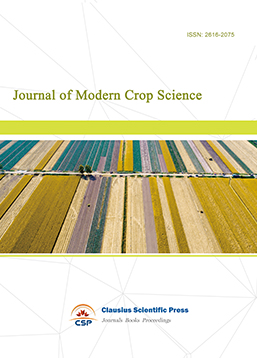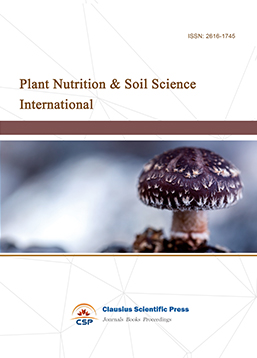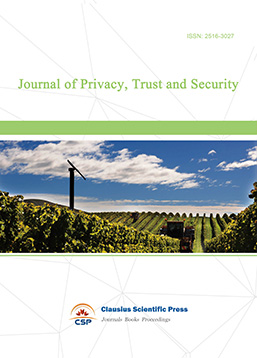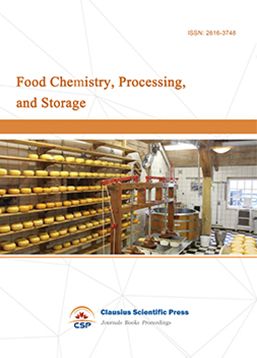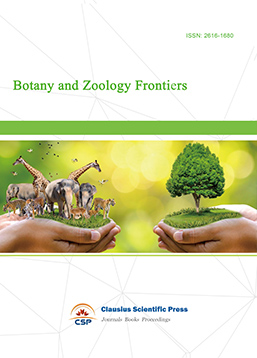Progress in Quality Control of Lettuce
DOI: 10.23977/afshn.2022.040104 | Downloads: 29 | Views: 1738
Author(s)
Ningrong Yang 1, Xinyang Xia 1
Affiliation(s)
1 College of Science, Tibet University, Lhasa, Tibet, 850000, China
Corresponding Author
Ningrong YangABSTRACT
Lettuce is one of the largest leaf vegetables in the world. It belongs to the genus lettuce of Compositae. It is mostly green, including loose-leaf lettuce, cream lettuce, knot lettuce, etc. It is widely cultivated in most parts of the world. Lettuce is favored by the public because of its low risk of pests and diseases and less pesticide residue. It meets the public's demand for pollution-free vegetables. In recent years, the demand for lettuce is increasing rapidly, and the planting area is also expanding, so the research work on lettuce is also rapidly advancing. With the development of science and technology, the production of lettuce has greatly increased. Although people pay more attention to the quality of lettuce with the increase in economic income, this study reviewed the regulation of lettuce quality from the aspects of the genome, leaf color, temperature, fertilizer, light, and storage methods.
KEYWORDS
Lettuce Quality, Soluble Sugar, Vitamin C, Organic Fertilizer, LED Light SourceCITE THIS PAPER
Ningrong Yang, Xinyang Xia, Progress in Quality Control of Lettuce. Advances in Food Science and Human Nutrition (2022) Vol. 4: 22-28. DOI: http://dx.doi.org/10.23977/afshn.2022.040104.
REFERENCES
[1] Chadwick, M. and Gawthrop, F. (2016) Perception of Bitterness, Sweetness, and Liking of Different Genotypes of Lettuce. Food Chemistry, 197: 66-74.
[2] Cristian, E. C. and Ricardo H. (2022) Effects of Light Intensity, Spectral Composition, and Paclobutrazol on the Morphology, Physiology, and Growth of Petunia, Geranium, Pansy, and Dianthus Ornamental Transplants. Journal of Plant Growth Regulation, 41: 461-478.
[3] Sebastian, R. C. W. and Wang, Z. W. (2017) Genome Assembly with in Vitro Proximity Ligation Data and Whole-Genome Triplication in Lettuce. Nature Communications, 8: 14953.
[4] Zhang, L. and Su, W. Q. (2017) RNA Sequencing Provides Insights into the Evolution of Lettuce and the Regulation of Flavonoid Biosynthesis. Nature Communications, 8: 2264.
[5] Han, Y. Y. and Chen , Z. J. (2016) MADS-Box Genes and Gibberellins Regulate Bolting in Lettuce (Lactuca sativa L.). Frontiers in Plant Science, 7.
[6] Vanjildorj, E. and Bae, T. W. (2005) Overexpression of Arabidopsis ABF3 Gene Enhances Tolerance to Droughtand Cold in Transgenic Lettuce (Lactuca Sativa). Plant Cell, Tissue and Organ Culture, 83: 41-50.
[7] Ward, J. M. and Cufr, C. A. (2005) The Dof Transcription Factor OBP3 Modulates Phytochrome and Cryptochrome Signaling in Arabidopsis. The Plant Cell, 17: 475-485.
[8] Trissl, H. W. and Wilhelm, Christian. (1993) Why do Thylakoid Membranes from Higher Plants form Grana Stacks? Trends in Biochemical Sciences, 18: 415-419.
[9] Guo, S. and Liu, X. (2008) Development of An Improved Ground-Based Prototype of Space Plant-Growing Facility. Advances in Space Research, 41: 736-741.
[10] Wo, S., Wang, Z. and Yang, X. (2017) Genome Assembly with in Vitro Proximity Ligation Data and Whole-Genome Triplication in Lettuce. Nat Commun 8, 14953.
| Downloads: | 2590 |
|---|---|
| Visits: | 90149 |

 Download as PDF
Download as PDF